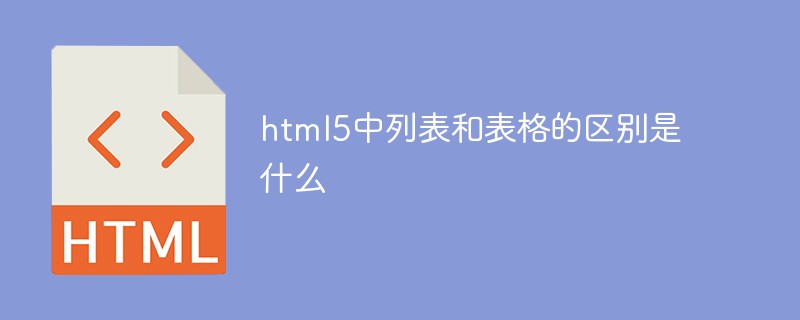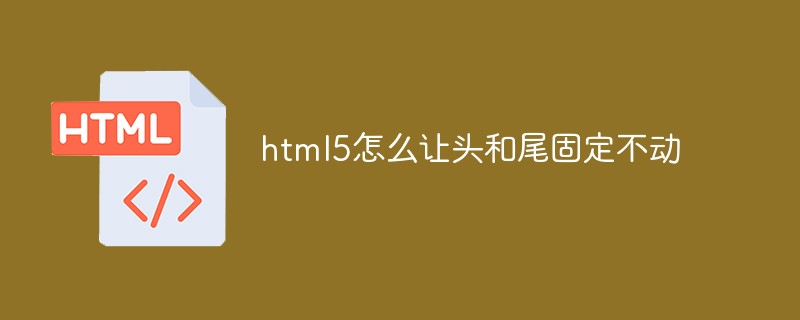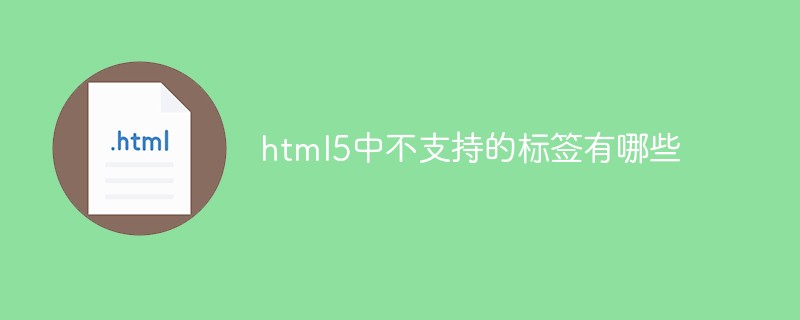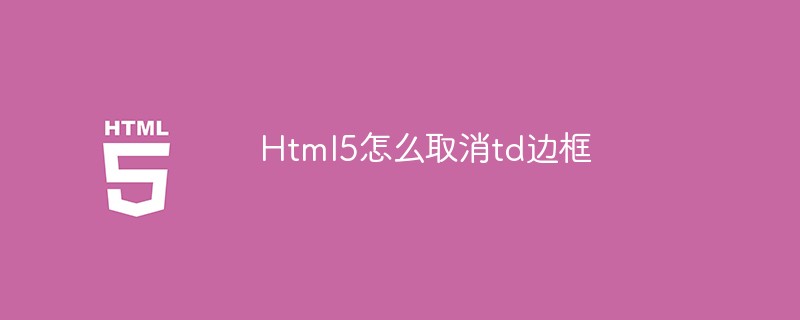This article mainly introduces the relevant elements and attributes of HTML5 forms, which has certain reference value. Now I share it with everyone. Friends in need can refer to it
You can specify core attributes such as id, style, class, etc., and you can also specify onclick event attributes. In addition, you can also specify the following attributes.
action: Specify the URL or URI for form submission.
method: Specify the request method, usually get or post.
enctype: Specify the character set used to encode the form content.
name: Specify the unique name of the form, generally consistent with the attribute value of id.
target: Specify which method to use to open the target URL.
enctype attribute is used to specify the encoding method of form data. This attribute has three attribute values:
application/x-www-form-urlencoded: This is the default encoding method, it only processes The value attribute value in the form control. A form using this encoding method will process the value of the form control into URL encoding.
multipart/form-data: This encoding method will process the form data in a binary manner. This encoding method will encapsulate the content of the file specified in the file field into the request parameters.
text/plain: This encoding method is used when the action attribute value of the form is in the form of mailto:URL. It is suitable for sending emails directly through the form.
The rules for converting form controls into request parameters are as follows:
Each form control with a name attribute corresponds to a request parameter. Form controls without a name attribute will not generate request parameters.
If multiple form controls have the same name attribute, multiple form controls only generate one request parameter, but this parameter has multiple values.
The name attribute of the form control specifies the request parameter name, and the value attribute specifies the request parameter value.
If a form control sets the disabled or disabled="disabled" attribute, the form control will no longer generate request parameters.
:
Single-line text box: Specify the type attribute of the element as text.
Password text box: Specify the type attribute of the element as password.
Hidden domain: Specify the type attribute of the element as hidden.
Radio button: Specify the type attribute of the element as radio.
Check box: Specify the type attribute of the element as checkbox.
Image domain: Specify the type attribute of the element as image.
File upload domain: Specify the type attribute of the element as file.
Submit, reset, and no-action buttons: specify the type attribute of the element as submit, reset, or button respectively.
elements can specify core attributes such as id, style, and class, event attributes such as onclick, and focus event attributes such as onfocus and onblur. In addition, you can also specify the following attributes:
checked: Set the radio button and whether the check box is checked by default.
disabled: Indicates that the element is disabled. This attribute cannot be specified when type="hidden".
maxlength: Specify the maximum number of characters allowed to be entered in the input box.
readonly: The content of the specified text box is not allowed to be modified.
size: Specify the width of the element. This attribute cannot be specified when type="hidden".
src: Specifies the URL of the image displayed in the image field. This attribute can only be specified when type="image".
<!DOCTYPE html>
<html lang="en">
<head>
<meta http-equiv="Content-Type" content="text/html;charset=GBK"/>
<title>getForm</title>
</head>
<body>
<form action="http://www.crazyit.org" method="get">
单行文本框:<input id="username" name="username" type="text" readonly="readonly"/><br/>
密码框:<input id="password" name="password" type="password"/><br/>
隐藏域:<input id="hidden" name="hidden" type="hidden"/><br/>
第一组单选框:<br/>
<input id="color" name="color" type="radio" value="red"/>
<input id="color2" name="color" type="radio" value="green"/>
<input id="color3" name="color" type="radio" value="blue"/><br/>
第二个单选框:<br/>
<input id="gender" name="gender" type="radio" value="male"/>
<input id="gender2" name="gender" type="radio" value="female"><br/>
两个复选框:<br/>
<input id="website" name="website" type="checkbox" value="leegang.org"/>
<input id="website2" name="website" type="checkbox" value="crazyit.org"/><br/>
文件上传域:<input id="file" name="file" type="file"/><br/>
图像域:<input type="image" src="img/wjc.gif" alt="疯狂Java联盟"/><br/>
下面是四个按钮:<br/>
<input id="ok" name="ok" type="submit" value="提交"/>
<input id="dis" name="dis" type="submit" value="提交" disabled="disabled"/>
<input id="cancle" name="cancle" type="reset" value="重填"/>
<input id="no" name="no" type="button" value="无动作"/>
</form>
</body>
</html>:
There are two ways to associate labels with form controls:
Implicitly use the for attribute: for The attribute is the id attribute value of the associated form control. (Recommended)
Display association: Place ordinary text and form controls together inside the element.
<form action="http://www.crazyit.org" method="get">
<label for="username">单行文本框:</label>
<input id="username" name="username" type="text"/><br/>
<label>密码框:<input id="password" name="password" type="password"/></label><br/>
<input id="ok" type="submit" value="登录疯狂Java联盟"/>
</form>:
It can contain ordinary text, text formatting tags, images, etc. It has richer functions than the input button.
elements can specify core attributes such as id, style, class, etc., and can also specify event response attributes such as onclick. In addition, you can also specify the following attributes:
disabled: whether to disable the button.
name: Specify a unique name for the button.
type: Specify what kind of button the button belongs to. The attribute value can only be button, reset or submit.
value: Specify the initial value of the button.
<form action="http://www.crazyit.org" method="get">
<button type="button"><b>提交</b></button><br/>
<button type="submit"><img src="/static/imghwm/default1.png" data-src="images/wjc.gif" class="lazy" alt="crazyit.org"/></button><br/>
</form>:
You can specify core attributes such as id, style, class, etc. This element can only specify the onchange event attribute. In addition, you can also specify the following attributes:
disabled: Set to disable the list box and drop-down menu.
multiple: Set multiple selections.
size: Specify that the list box can display multiple list items at the same time.
elements can only contain the following two elements:
: used to define list items and menu items.
: used to define list items and menu item groups. This element can only contain sub-elements.
:
elements can specify core attributes such as id, style, and class, as well as onclick, onselect, and onchange event attributes. In addition, this element can also specify the following attributes:
cols: Specify the width of the text field.
rows: Specify the height of the text field.
disabled: Disable this text field.
readonly: The specified text is read-only.
Related recommendations:
Introduction to knowledge points related to HTML forms
HTML5 form attribute tutorial examples
The above is the detailed content of HTML5 form related elements and attributes. For more information, please follow other related articles on the PHP Chinese website!
 html5的div一行可以放两个吗Apr 25, 2022 pm 05:32 PM
html5的div一行可以放两个吗Apr 25, 2022 pm 05:32 PMhtml5的div元素默认一行不可以放两个。div是一个块级元素,一个元素会独占一行,两个div默认无法在同一行显示;但可以通过给div元素添加“display:inline;”样式,将其转为行内元素,就可以实现多个div在同一行显示了。
 html5中列表和表格的区别是什么Apr 28, 2022 pm 01:58 PM
html5中列表和表格的区别是什么Apr 28, 2022 pm 01:58 PMhtml5中列表和表格的区别:1、表格主要是用于显示数据的,而列表主要是用于给数据进行布局;2、表格是使用table标签配合tr、td、th等标签进行定义的,列表是利用li标签配合ol、ul等标签进行定义的。
 html5怎么让头和尾固定不动Apr 25, 2022 pm 02:30 PM
html5怎么让头和尾固定不动Apr 25, 2022 pm 02:30 PM固定方法:1、使用header标签定义文档头部内容,并添加“position:fixed;top:0;”样式让其固定不动;2、使用footer标签定义尾部内容,并添加“position: fixed;bottom: 0;”样式让其固定不动。
 HTML5中画布标签是什么May 18, 2022 pm 04:55 PM
HTML5中画布标签是什么May 18, 2022 pm 04:55 PMHTML5中画布标签是“<canvas>”。canvas标签用于图形的绘制,它只是一个矩形的图形容器,绘制图形必须通过脚本(通常是JavaScript)来完成;开发者可利用多种js方法来在canvas中绘制路径、盒、圆、字符以及添加图像等。
 html5中不支持的标签有哪些Mar 17, 2022 pm 05:43 PM
html5中不支持的标签有哪些Mar 17, 2022 pm 05:43 PMhtml5中不支持的标签有:1、acronym,用于定义首字母缩写,可用abbr替代;2、basefont,可利用css样式替代;3、applet,可用object替代;4、dir,定义目录列表,可用ul替代;5、big,定义大号文本等等。
 html5废弃了哪个列表标签Jun 01, 2022 pm 06:32 PM
html5废弃了哪个列表标签Jun 01, 2022 pm 06:32 PMhtml5废弃了dir列表标签。dir标签被用来定义目录列表,一般和li标签配合使用,在dir标签对中通过li标签来设置列表项,语法“<dir><li>列表项值</li>...</dir>”。HTML5已经不支持dir,可使用ul标签取代。
 Html5怎么取消td边框May 18, 2022 pm 06:57 PM
Html5怎么取消td边框May 18, 2022 pm 06:57 PM3种取消方法:1、给td元素添加“border:none”无边框样式即可,语法“td{border:none}”。2、给td元素添加“border:0”样式,语法“td{border:0;}”,将td边框的宽度设置为0即可。3、给td元素添加“border:transparent”样式,语法“td{border:transparent;}”,将td边框的颜色设置为透明即可。
 html5是什么意思Apr 26, 2021 pm 03:02 PM
html5是什么意思Apr 26, 2021 pm 03:02 PMhtml5是指超文本标记语言(HTML)的第五次重大修改,即第5代HTML。HTML5是Web中核心语言HTML的规范,用户使用任何手段进行网页浏览时看到的内容原本都是HTML格式的,在浏览器中通过一些技术处理将其转换成为了可识别的信息。HTML5由不同的技术构成,其在互联网中得到了非常广泛的应用,提供更多增强网络应用的标准机。


Hot AI Tools

Undresser.AI Undress
AI-powered app for creating realistic nude photos

AI Clothes Remover
Online AI tool for removing clothes from photos.

Undress AI Tool
Undress images for free

Clothoff.io
AI clothes remover

AI Hentai Generator
Generate AI Hentai for free.

Hot Article

Hot Tools

EditPlus Chinese cracked version
Small size, syntax highlighting, does not support code prompt function

SublimeText3 Chinese version
Chinese version, very easy to use

DVWA
Damn Vulnerable Web App (DVWA) is a PHP/MySQL web application that is very vulnerable. Its main goals are to be an aid for security professionals to test their skills and tools in a legal environment, to help web developers better understand the process of securing web applications, and to help teachers/students teach/learn in a classroom environment Web application security. The goal of DVWA is to practice some of the most common web vulnerabilities through a simple and straightforward interface, with varying degrees of difficulty. Please note that this software

PhpStorm Mac version
The latest (2018.2.1) professional PHP integrated development tool

Dreamweaver CS6
Visual web development tools






